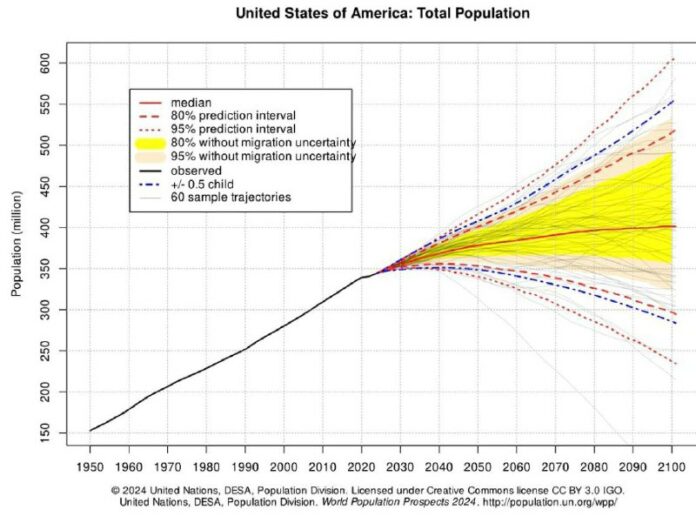The United States is currently experiencing a significant demographic shift, with fertility rates falling below replacement levels for more than 15 consecutive years. This trend has major implications for the future population growth of the country, as well as the composition of that population.
According to recent studies, the maximum natural growth of the U.S. population is likely to be no more than 24 million by the year 2050. This is a stark contrast to previous decades, when the population was growing at a much faster rate. The decline in fertility rates is primarily driven by decreases in the total fertility rates (TFR) of non-Hispanic white (NHW), non-Hispanic black (NHB), and Hispanic populations. While NHW TFR is expected to eventually recover to around 1.6 to 1.8, NHB and Hispanic TFR are projected to continue falling over time. Asian TFR, on the other hand, is expected to remain low compared to other groups.
If current trends continue, the U.S. population may still grow to as high as 400 million by 2050. However, a large portion of this growth is likely to be driven by mass migration rather than natural increases in population. If the new administration is successful in securing the border and other points of entry to only allow lawful entry into the country, the population is projected to be closer to 375-379 million by 2050.
This demographic shift has important implications for policymakers, as they will need to address issues related to an aging population, workforce shortages, and changes in the racial and ethnic makeup of the country. It also highlights the need for comprehensive immigration reform that takes into account the changing population dynamics of the U.S.
Overall, the declining fertility rates and changing demographic trends in the United States signal a new era of population growth that will be largely driven by immigration rather than natural increases. As the country grapples with these shifts, it will be important to consider the long-term implications for economic, social, and political development.

